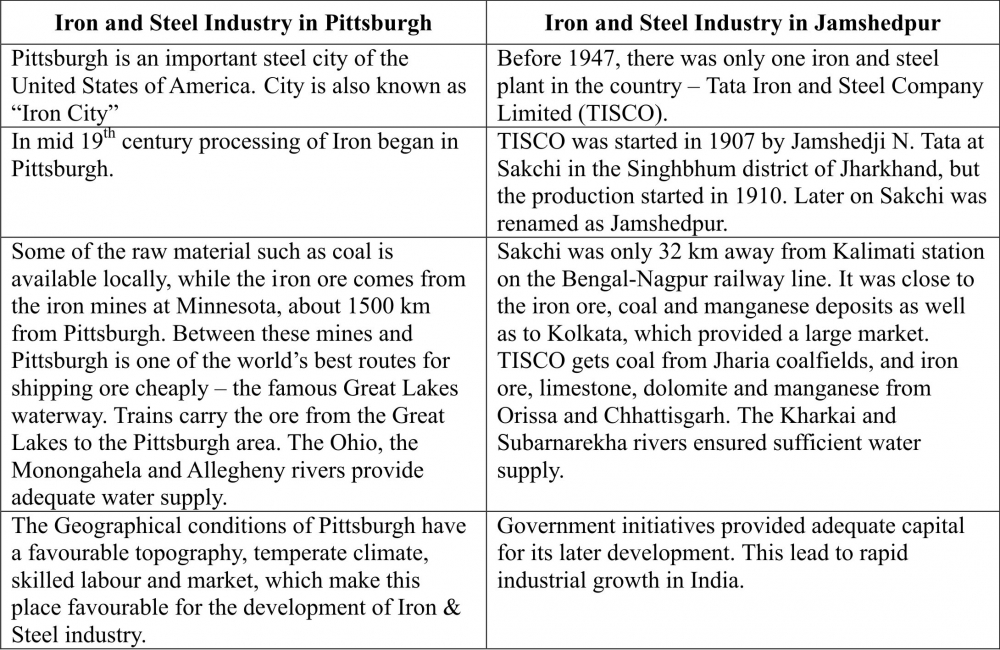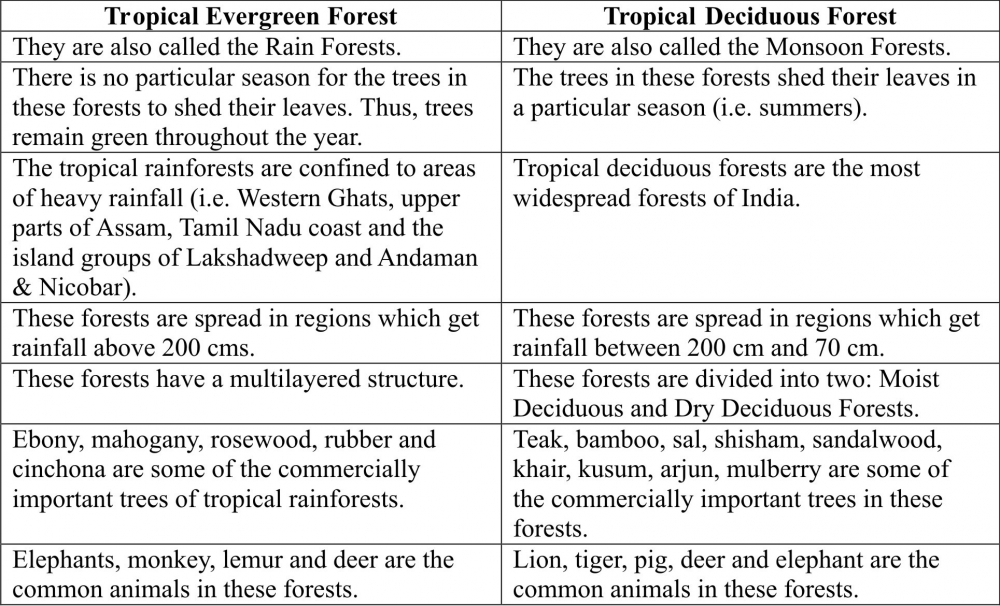Class VIII: Chapter 6 - Human Resource
Important points to remember:
1. Demography: The study of population is known as Demography.
2. Census: The official collection of population data by all means is known as Census. This is conducted once in ten years. Currently, we are following 2011 census. In 1872, first population census of India was conducted. The Census of India 2011 is the fifteenth census starting from1872 and the seventh since independence.
3. Human beings use their knowledge and skill to convert natural resource into more valuable goods.
4. It is people with their demands and abilities that turn them into 'resources'.
5. Human resources like other resources are not equally distributed over the world. They differ in their educational levels, age and sex.
6. More than 90% of the world population lives in the continents of the Northern Hemisphere (Continents found in the northern hemisphere include Europe, Caribbean, North America and Central America. Other continents such Asia, Africa and South America), where as only 10% of the population resides in the continents of the Southern Hemisphere (Continents found entirely in the southern hemisphere are Antarctica and Australia. Other continents have parts in this region, and they include Africa, Asia and South America).

7. Birth Rate: Births are usually measured using the birth rate i.e. the number of live births per 1,000 people.they include Africa, Asia and South America).5. Human resources like other resources are not equally distributed over the world. They differ in their educational levels, age and sex.
8. Death Rate: Deaths are usually measured using the death rate i.e. the number of deaths per 1,000 people.
9. Migrations is the movement of people in and out of an area. Emigrants are people who leave a country; Immigrants are those who arrive in a country.
10. Natural Growth Rate: Births and deaths are the natural causes of population change. The difference between the birth rate and the death rate of a country is called the natural growth rate.
11. Population Pyramid is a graphical representation of the age, sex composition of the population.
Study of Population includes:
- Population Size and Distribution.
- Population Growth and Process of Population Change.
- Characteristics or qualities of the population.
FACTORS AFFECTING DISTRIBUTION OF POPULATION


GEOGRAPHICAL FACTORS:
1. Topography: People always prefer to live on plains rather than mountains and plateaus because these areas are suitable for farming, manufacturing and service activities. The Ganga plains are the most densely populated areas of the world while mountains like Andes, Alps and Himalayas are sparsely populated.
2. Climate: People usually avoid extreme climates that are very hot or very cold like Sahara desert, polar regions of Russia, Canada and Antarctica.
3. Soil: Fertile soils provide suitable land for agriculture. Fertile plains such as Ganga and Brahmaputra in India, Hwang-He, Chang Jiang in China and the Nile in Egypt are densely populated.
4. Water: People prefer to live in the areas where fresh water is easily available. The river valleys of the world are densely populated while deserts have spare population.
Minerals: Areas with mineral deposits are more populated. Diamond mines of South Africa and discovery of oil in the Middle east lead to settling of people in these areas.
Social, Cultural and Economic Factors:
1. Social: Areas of better housing, education and health facilities are more densely populated e.g., Pune.
2. Cultural: Places with religion or cultural significance attract people. Varanasi, Jerusalem and Vatican city are some examples.
3. Economic: Industrial areas provide employment opportunities. Large number of people are attracted to these areas. Osaka in Japan and Mumbai in India are two densely populated areas.
POPULATION CHANGE
1. The population change refers to change in the number of people during a specific time. The world population has not been stable, it keeps on changing from time to time. The changes occur due to change in the number of births and deaths.
2. Birth Rate: Births are usually measured using the birth rate i.e. the number of live births per 1,000 people.
3. Death Rate: Deaths are usually measured using the death rate i.e. the number of deaths per 1,000 people.
4. A migration is the movement of people in and out of an area. Out-migration or Emigrants are people who leave a country & In-migration or Immigrants are those who arrive in a country.
5. Natural Growth Rate: Births and deaths are the natural causes of population change. The difference between the birth rate and the death rate of a country is called the natural growth rate. The population increase in the world is mainly due to rapid increase in natural growth rate.

PATTERNS OF POPULATION CHANGE
Rates of population growth vary from country to country. Some countries like Kenya have high population growth rates. They had both high birth rates and death rates. In other countries like United Kingdom, population growth is slowing because of both low death and low birth rates.
Now, with improving health care, death rates have fallen, but birth rates still remain high leading to high growth rates.
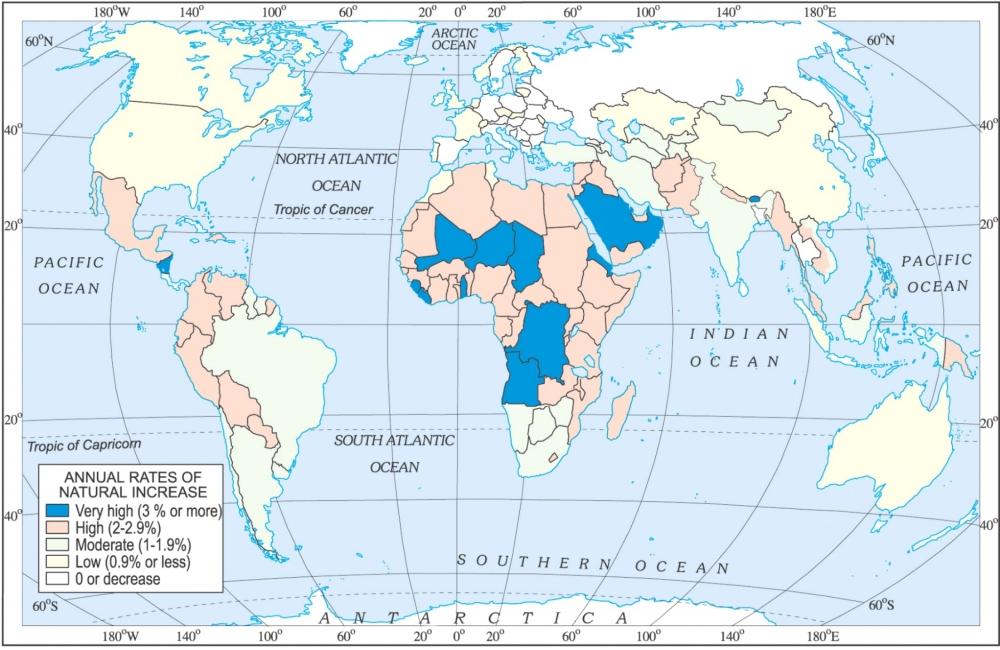

DISTRIBUTION OF POPULATION
The way in which people are spread across the earth surface is known as the pattern of population distribution. Sixty per cent of the world's people stay in just 10 countries. All of them have more than a 100 million people.
DENSITY OF POPULATION
Population density is the number of people living in a unit area of the earth's surface. It is normally expressed as per square km. The average density of population in the whole world is 51 persons per square km.
COMPOSITION OF POPULATION
1. The structure of population is known as the Composition of Population.
2. It helps us to understand the number of males and females, rural and urban population, literate and illiterates, working and non-working population, income and health status.
3. An interesting way of studying the population composition of a country is by looking at the population pyramid, also called an age-sex pyramid. It helps us to know the population under different age groups (i.e. 0 – 15, 15 – 59 and 60 & above). It also shows the number of males and females under each group.
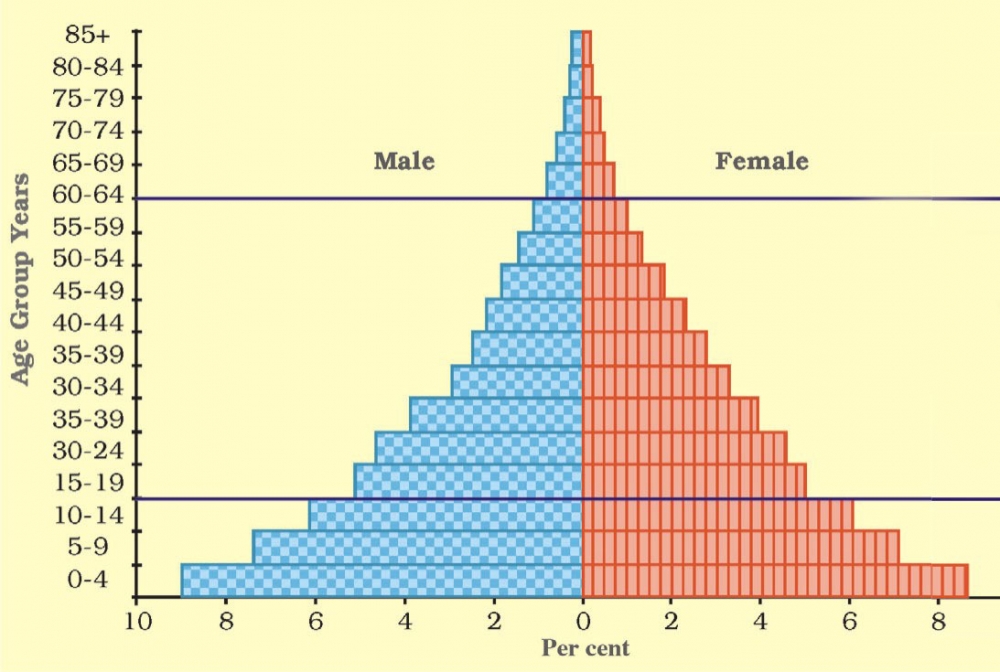

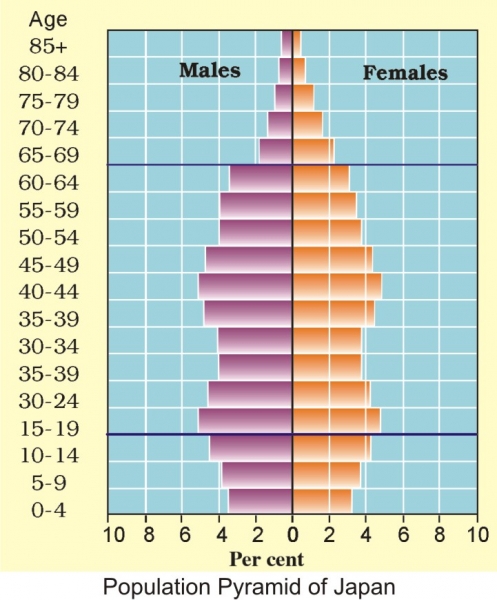


-----x-----X-----x-----











